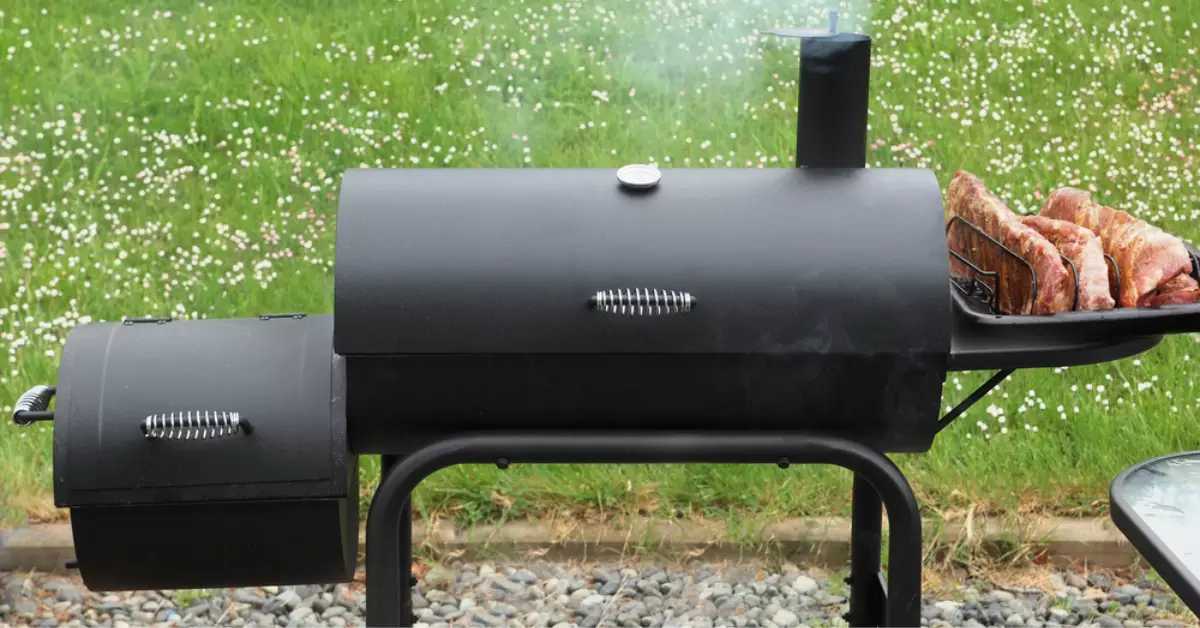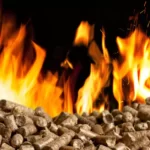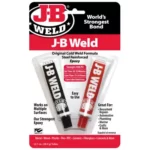In the culinary world, offset smokers have a reputation for imparting exquisite flavors to your favorite meats. They can transform a simple slab of ribs into a tantalizingly tender delicacy with a smoky and complex flavor profile. However, achieving this culinary masterpiece often comes with its challenges, the most common one being inadequate heating.
Inadequate heating in offset smokers can be a barbecue enthusiast’s nightmare, making it difficult to achieve the desired temperature for optimal smoking. The crux of the problem lies in maintaining the right balance of heat, smoke, and moisture – too little heat, and the smoker fails to smoke the meat properly. The dilemma of an offset smoker not getting hot enough is quite prevalent and is often rooted in a combination of various factors.
Offset smokers operate on a specific principle. The heat source, typically wood or charcoal, is set in a separate compartment, the firebox. This heat travels to the main chamber, where the food is placed, providing indirect heating. Understanding the intricacies of your smoker’s operations can help address the issue at hand.
Basics of Offset Smoker Functionality
Design and Working Mechanism
An offset smoker comprises two parts: the main chamber and the firebox. The main chamber is designed for food placement while the firebox provides the heat. Hot air and smoke flow from the firebox into the cooking chamber, infusing the meat with flavor.
Optimum Temperature Range for Smoking
The optimum temperature range for most smoked foods falls between 225°F and 250°F. The objective is slow, controlled cooking, allowing the smoke to seep into the meat and enhance its flavor.
Reasons Your Offset Smoker Isn’t Getting Hot Enough
Fuel Quality and Quantity
One of the primary factors affecting the heat in your offset smoker is the fuel. Both the quality and quantity of fuel play significant roles. High-quality hardwoods like oak, hickory, and maple are optimal choices for generating sustained heat.
Ventilation Problems
A properly ventilated smoker is essential for maintaining the right temperature. The vents in the firebox and the cooking chamber control the amount of oxygen reaching the fuel. If these vents are blocked or improperly adjusted, it can lead to inefficient burning and subsequently, insufficient heat.
Inadequate Insulation
Insulation is another key aspect. Poor insulation can lead to significant heat loss, causing your smoker to underperform. An offset smoker with thin walls or large gaps allows heat to escape, making it harder to achieve and maintain the desired temperature.
Detailed Look at Fuel Issues
Choice of Wood or Charcoal
Choosing between wood and charcoal depends on personal preference. While wood imparts a stronger smoky flavor, charcoal burns longer and maintains a more consistent temperature. Experimenting with different fuels can help you find the balance that suits your cooking style.
Proper Quantity and Arrangement
Too little fuel won’t generate enough heat, while too much can restrict airflow. Arrange your fuel to maximize airflow, starting with larger pieces at the bottom and smaller ones on top. The key is to achieve a steady burn for consistent heat.
Impact of Fuel Quality on Heat
High-quality fuel contributes to better heat generation. Hardwoods are denser, burn slower, and provide consistent heat compared to softwoods. Hence, hardwoods like hickory, oak, and mesquite are preferable.
Understanding Ventilation Complications
Airflow Basics in an Offset Smoker
Proper airflow is crucial in managing the temperature of an offset smoker. The vents, or dampers, control the flow of oxygen to the fuel. More oxygen leads to faster burning and higher temperatures, while less oxygen results in slower burning and lower temperatures.
Consequences of Restricted Airflow
Restricted airflow can lead to inefficient burning and lower temperatures. Too much smoke can also build up within the cooking chamber, resulting in a bitter taste in the food.
Identifying Ventilation Problems
Visible smoke pouring out of your smoker is a sign of poor ventilation. Ideally, you want thin, blue smoke – an indication of efficient burning and good airflow.
Exploring Insulation Shortcomings
The Role of Insulation in Heat Retention
Insulation helps retain heat within the smoker, ensuring a consistent temperature. It reduces the effect of external factors, such as wind or cold weather, on the smoker’s temperature.
Common Signs of Insulation Issues
If your offset smoker struggles to reach the desired temperature or requires frequent fuel refills, it might have insulation issues. Look for visible gaps, thin walls, or a flimsy firebox door – these are signs of poor insulation.
Common Mistakes That Reduce Heat
Neglecting Preheating
Preheating your smoker can help reach the required temperature faster and maintain it longer. It also helps kill any bacteria present, ensuring a safe cooking environment.
Overloading the Smoker
Overloading the smoker with too much meat can drop the temperature, as more energy is required to cook the food. Always leave ample space for heat and smoke to circulate effectively.
Ignoring Maintenance
Regular cleaning and maintenance are essential to keep your smoker working efficiently. Excess ash buildup can obstruct airflow, while grease and food residues can affect the smoker’s performance.
Effective Solutions for Increasing Heat in Offset Smoker
Upgrading to High-quality Fuel
Using high-quality hardwoods can enhance heat generation and maintain a consistent temperature. Combining different types of wood can also create unique flavor profiles.
Improving Ventilation System
Ensure the vents are open and clean, and adjust them as necessary to control the airflow. You can also add a chimney to your smoker to improve ventilation.
Enhancing Insulation
Using heat-resistant seals, insulating blankets, or even welding spots can improve the insulation of your smoker. This not only conserves heat but also saves fuel.
Regular Cleaning and Maintenance
Regularly clean your smoker to prevent ash, grease, and food residues from accumulating. Also, check the vents, firebox, and cooking chamber for any damages and repair them as necessary.
Choosing the Right Offset Smoker for Sufficient Heat
Selecting an appropriate offset smoker is the first step in ensuring you can achieve and maintain the necessary heat levels for optimal smoking.
Factors to Consider
There are several characteristics you should consider when choosing an offset smoker:
- Material Thickness: Thicker material has better heat retention and durability, leading to more consistent cooking.
- Quality of Seals: Smokers with high-quality seals ensure minimal heat and smoke loss.
- Placement of Vents: Vents should be easily adjustable and strategically located for optimal airflow control.
- Size of the Firebox: A larger firebox allows for more fuel, which can lead to higher temperatures.
- Insulation: Offset smokers with built-in insulation can conserve heat more efficiently.
- Built-in Thermometers: These can be a handy feature for monitoring the temperature without opening the cooking chamber.
- Additional Features: Some models come with additional features like a warming plate or storage racks, adding to their utility.
Importance of Quality Materials and Design
An offset smoker constructed from high-quality materials will be more efficient at heat retention and management. Thick steel construction, tight-fitting doors, and strong seals can help maintain a stable cooking environment, resist weathering, and last longer.
The design of the smoker also plays a significant role. A well-thought-out design can enhance functionality, ease of use, and cooking performance. For instance, reverse flow offset smokers incorporate a metal plate under the cooking grate that directs the heat to the far end of the smoker before it circulates back over the food. This design feature ensures more even heat distribution and consistent cooking results.
Addressing Offset Smoker Issues
To make the most of your offset smoker, you need to be proactive in dealing with common problems that can affect its heat output. Below are some practical tips and solutions:
- Season Your Smoker: Before using your smoker for the first time, season it by applying a light coat of cooking oil to the interior surfaces and then running it at a high temperature for a few hours. This process will help protect against rust and also remove any residues left from the manufacturing process.
- Choose the Right Fuel: Opt for high-quality hardwoods like oak, hickory, and mesquite that burn longer and hotter.
- Proper Ventilation: Regularly check the vents for any blockages and adjust them as needed to control airflow.
- Effective Insulation: If your smoker isn’t well-insulated, consider adding heat-resistant seals or using an insulating blanket to conserve heat.
- Regular Maintenance: Clean your smoker after every use to prevent buildup of ash, grease, and food residues, which can affect its performance.
- Preheat Your Smoker: Always preheat your smoker to the desired temperature before adding the meat.
- Avoid Overloading: Ensure the smoker isn’t overloaded with food. There should be enough space for heat and smoke to circulate evenly.
Frequently Asked Questions
How Often Should I Clean My Offset Smoker?
It’s recommended to clean your offset smoker after every use. Regular cleaning helps remove ash, grease, and food residues that can affect its performance and taste of the food.
What Can I Do to Improve My Smoker’s Insulation?
Improving insulation can be achieved by using heat-resistant seals, insulating blankets, or even welding spots. Some people also add a layer of high-temperature silicone around the edges of the cooking chamber door to reduce heat loss.
Can I Use Both Wood and Charcoal in My Offset Smoker?
Yes, many pitmasters prefer a mix of wood and charcoal in their offset smokers. While wood imparts a unique flavor to the meat, charcoal burns longer and provides consistent heat.
Conclusion
Ensuring that an offset smoker reaches and maintains the desired temperature requires understanding the underlying causes of heat loss. This can be a learning curve for beginners, but with the right approach and practice, it becomes second nature.
From choosing the right smoker with effective design features and quality construction, to using the best fuel types, managing ventilation, and conducting regular maintenance, each aspect contributes to a high-performing offset smoker.
Your journey to mastering the art of smoking is a blend of knowledge, technique, and a love for the deep, rich flavors that only a well-managed fire can produce. Despite the challenges, the delectable end result makes it a worthwhile culinary endeavor.







